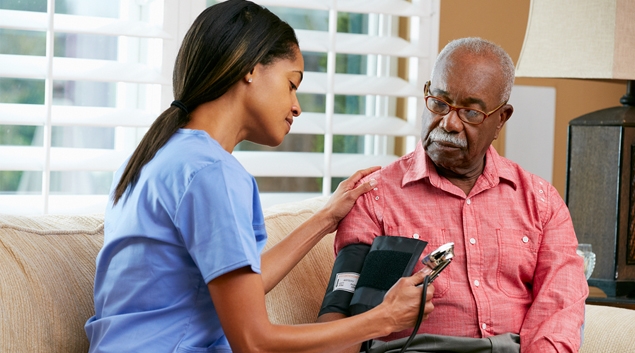
In the period from October 2015 to September 2016, before the Affordable Care Act, a substantial portion of Medicare patients referred to home healthcare after hospitalization did not receive that care, new findings show.
Using national data, the researchers detailed how often Medicare patients referred to home healthcare services after a hospital discharge received one or more home healthcare visits. They examined variation in the rates of successful home healthcare referrals by patient sociodemographic characteristics.
The study, “Assessment of Receipt of the First Home Health Care Visit After Hospital Discharge Among Older Adults,” was published this week by the JAMA Network Open.
WHAT’S THE IMPACT
Led by Syracuse University Professor Jun Li, the team noted that only 54% of Medicare patients referred to home healthcare services following a hospitalization received home healthcare visits.
Black and Hispanic Medicare beneficiaries received home health at lower rates than White patients by 7.3 and 9.2 percentage points, respectively. Meanwhile, patients living in disadvantaged neighborhoods — those in ZIP codes with high poverty and unemployment rates — received lower rates of home healthcare services by about 5 percentage points.
Home healthcare is one of the fastest-growing services used by patients following a hospital stay in the U.S. Patients receive health and social services within their homes to help them recover from illness or injury and to maintain their independence. Ensuring access to home healthcare has important implications for patient wellbeing and the U.S. healthcare system.
Despite the benefits of home healthcare, nearly half of all discharged patients are unlikely to receive it. The findings suggest patients in vulnerable population groups are more likely to face consequential barriers to home healthcare. These disparities are doubtlessly contributing to the inequitable healthcare system in the U.S., authors said.
Since recent healthcare reform efforts increasingly rely on home healthcare as a substitute for institutional care, Li said policymakers should implement a system that ensures all patients receive the care that has been recommended by their physicians.
THE LARGER TREND
Under the Patient-Driven Grouping Model, spending on home healthcare services is down — way down. In fact, according to an analysis from health economics and policy consulting firm Dobson DaVanzo and Associates, spending on home healthcare is down 21.6% from the initial projections.
DDA largely attributes this to incorrect assumptions made by the Centers for Medicare and Medicaid Services when it comes to provider behavior under PDGM as compared to the old Prospective Payment System, which ended a two-decade run on January 1.
Twitter: @JELagasse
Email the writer: jeff.lagasse@himssmedia.com
